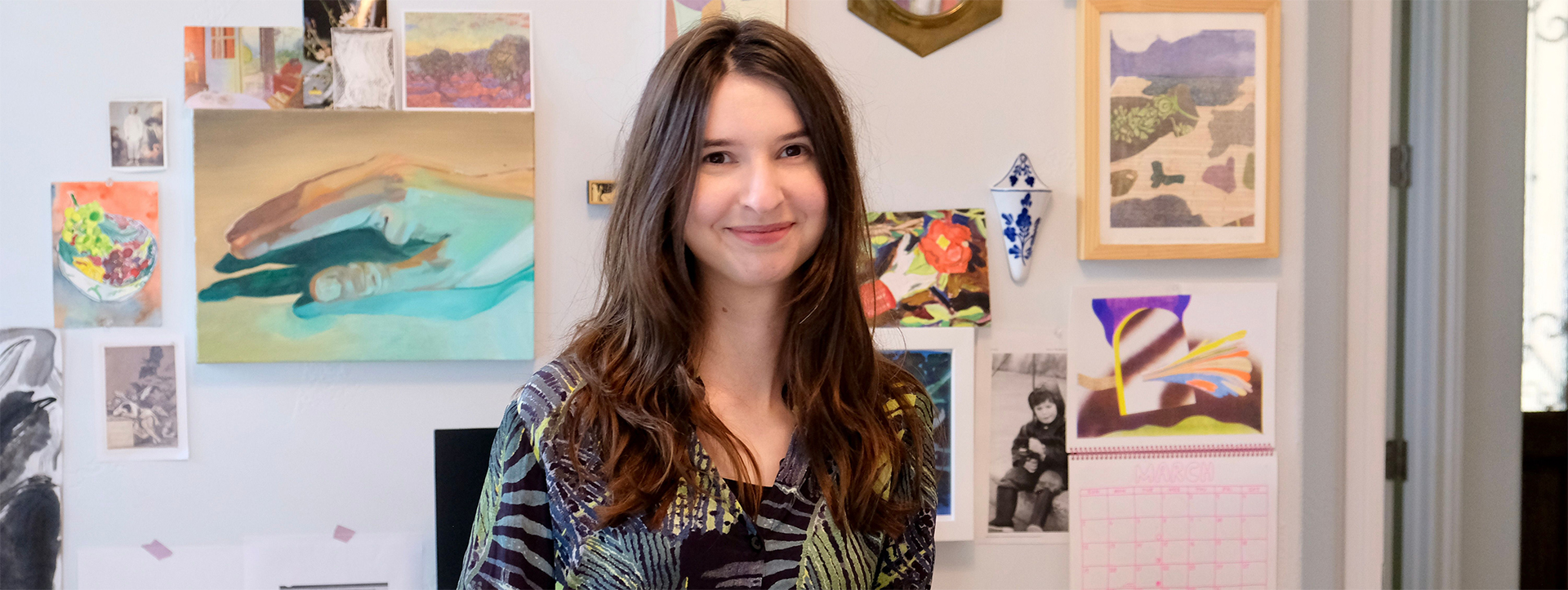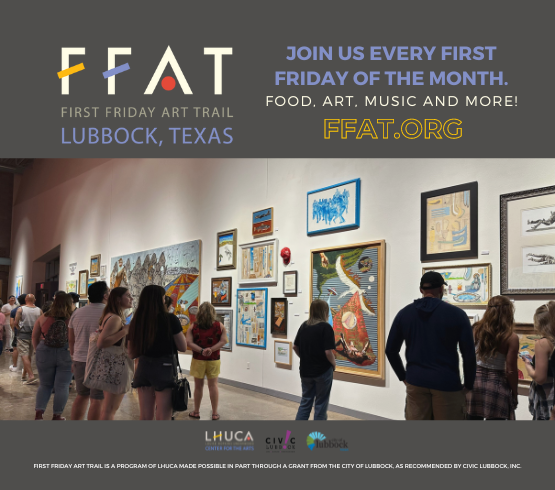“What does it mean to make an image of a woman now?” Lauren Moya Ford asked during our recent studio visit. For her, the question is not sensational or rhetorical; instead, it’s personal.
But Ford is careful to capture what may, at first, appear to be small, fleeting moments but that actually hold timeless symbolic significance: a hand holding a flower, a woman looking in a mirror, the flickering of a candle’s flame.
As an artist and arts writer who earned her MFA in painting at the University of Houston, Ford always loved art history, and she continues to reference aspects of it in her work as she shares what she is seeing, learning, and experiencing. In fall 2015, she moved to Spain where she wrote for various publications, focusing on events, artists, and exhibitions in Madrid, Barcelona, Bilbao, and Palma de Mallorca, plus other parts of Europe such as Lisbon, Portugal, Stockholm, and more. When she moved to Austin in September of 2020, where she currently lives, her arts practice blossomed.
Today she draws from photographs, memories, and her surroundings, paying special attention to life’s poignant moments.
“During the height of the pandemic, time was different. Breaking down the day with little rituals of having tea or writing or reading was meaningful for me,” Ford says. “It was also a time for experimentation in my artwork—I started using Japanese papers that are incredibly responsive. Depending on how saturated or dry my brushes are, I can get all kinds of different effects, textures, and tones. I fell in love with papers and inks.”
Her materials allow her to work quickly, infusing her gestural depictions of flowers, plants, hands, faces, and mirrors with energy and emotion. For example, London Flowers (2023) portrays a pink flower bouquet so large as to obscure a person’s head, with the folds and shadows of the bouquet’s wrapping simultaneously blending into said person’s striped shirt and taking the shape of a dark purple hood. My Own Window and Petunias, each from 2023 and each depicting a woman—one looking at herself in a handheld mirror, fingers in her hair, and the other with arms crossed, one hand raised as if in a defensive gesture—are bordered, perhaps protected, by flowers.
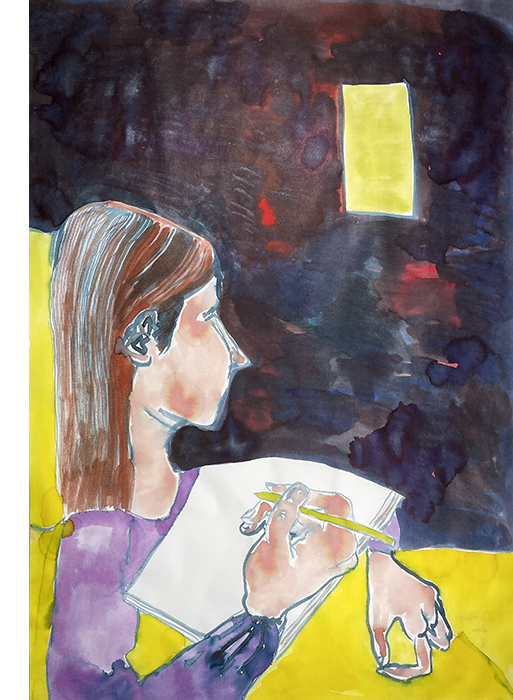
1 ⁄10
Lauren Moya Ford, Drawing in Bed (IBS), 2023, ink on Masa paper, 21 x 31 inches
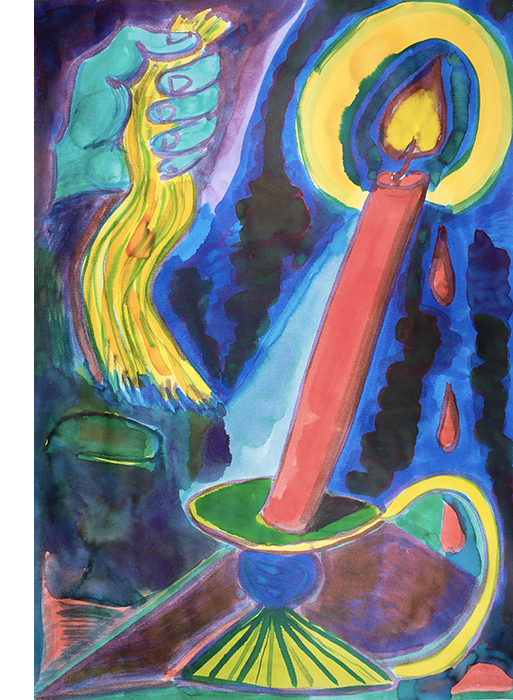
2 ⁄10
Lauren Moya Ford, Leaning Candle, 2023, ink on Masa paper, 21 x 31 inches
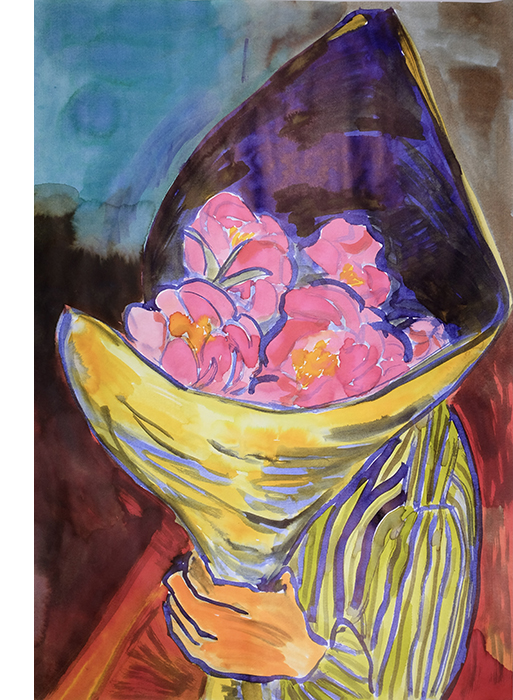
3 ⁄10
Lauren Moya Ford, London Flowers, 2023, ink on Masa paper, 21 x 31 inches

4 ⁄10
Lauren Moya Ford, Meal Time, 2023, ink on Kinwashi paper, 25 x 37 inches
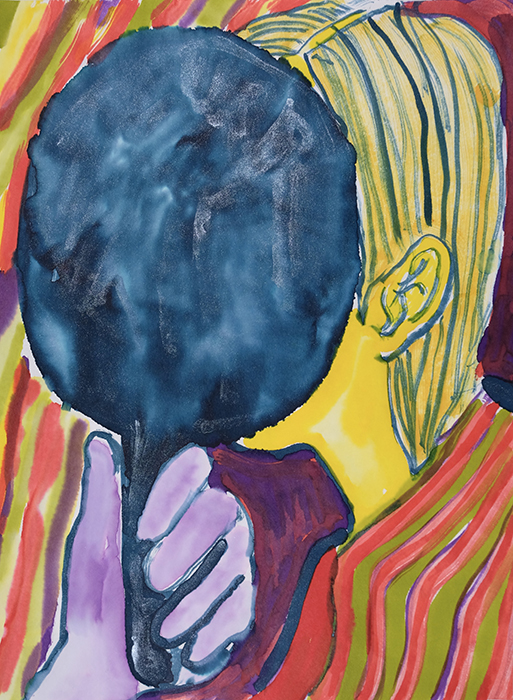
5 ⁄10
Lauren Moya Ford, Woman and Mirror I, 2023, ink on Yasutomo paper, 9 x 12 inches
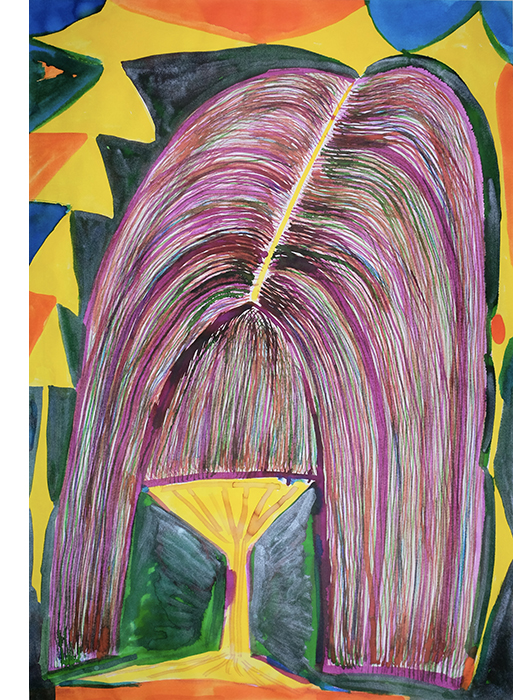
6 ⁄10
Lauren Moya Ford, Wig II, 2023, ink on Masa paper, 21 x 31 inches

7 ⁄10
Lauren Moya Ford, Ways to Hold a Rose, 2022, ink on Masa paper, 21 x 31 inches
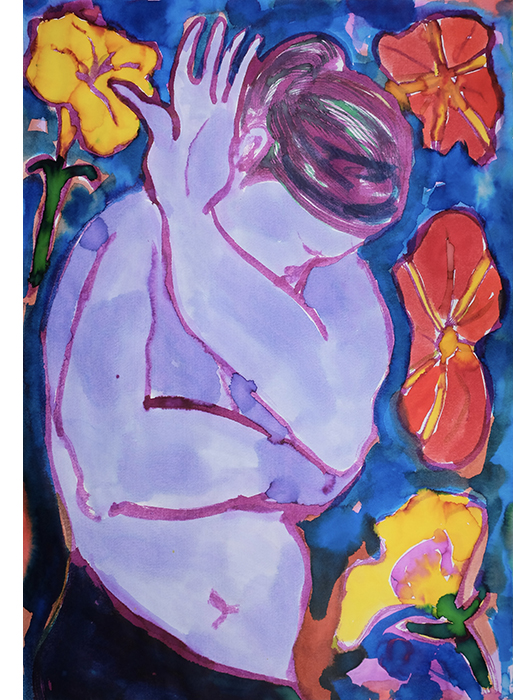
8 ⁄10
Lauren Moya Ford, Petunias, 2023, ink on Masa paper, 21 x 31 inches

9 ⁄10
Lauren Moya Ford, My Own Window, 2023, ink on Masa paper, 21 x 31 inches
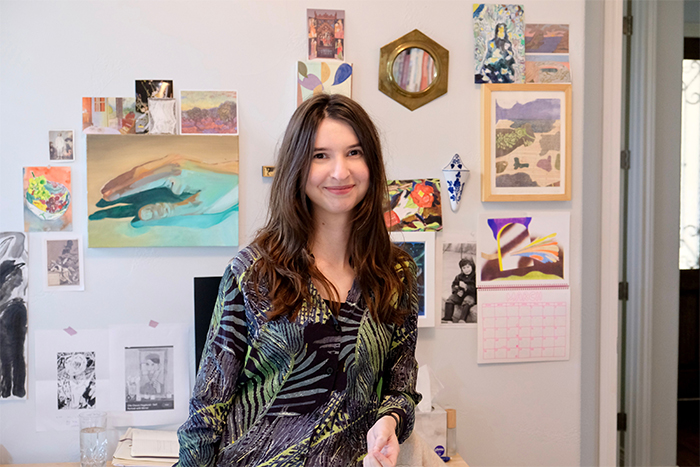
10 ⁄10
Lauren Moya Ford in her Austin Studio. Photo by Francisco Julio Dans Vincente.
Ford’s use of color, especially her application of yellow and green for skin tones, against variations of purple and red, add an almost claustrophobic sense of unease that permeates the picture plane, bleeding to the paper’s edge.
Ways to Hold a Rose (2022) is a frantic study of what many consider to be a universal symbol of beauty. Drawing in Bed (IBS) (2023) suggests Ford’s struggle with health issues, the yellow of her bed and far window offer an almost sickly illumination. The bright green plates in Meal Time play host to carrots, potatoes, and eggs as a pink and yellow striped tablecloth drape one elongated pink foot that grounds the entire scene. In Leaning Candle (2023) a turquoise-colored hand grips a lock of wavy yellow hair in the dark, dangerously close to an open flame.
“Hair is something that’s such an important signifier for women—it gives us so much anxiety and so much power. Everything is weighted in the hair.”
-NANCY ZASTUDIL

